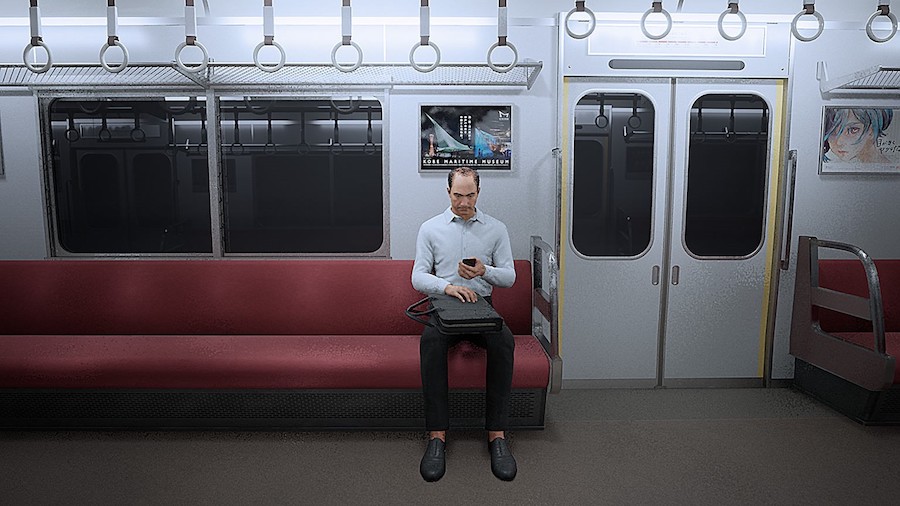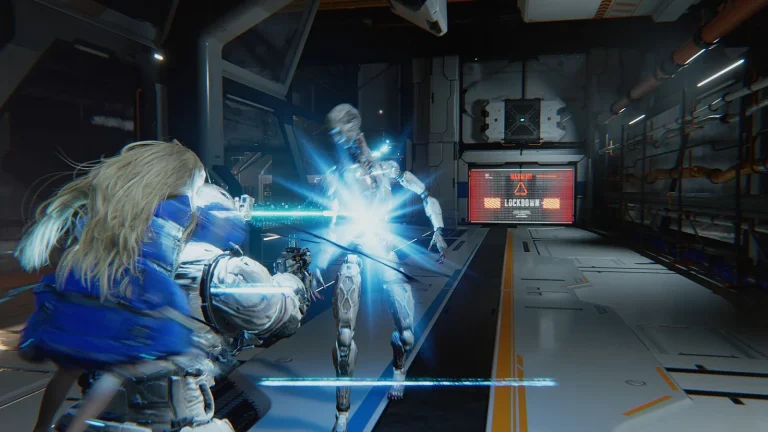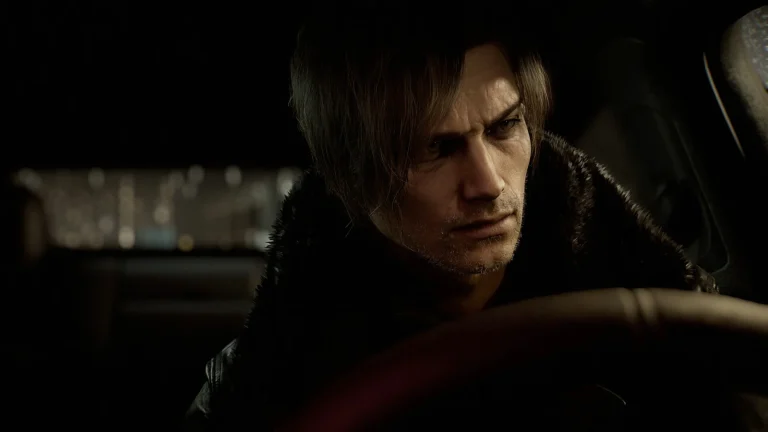Since its release last November, the anomaly-spotting walking sim The Exit 8 has become an indie hit, even spawning its own genre of “8-like” games. The groundbreaking title is the brainchild of Japanese solo developer Kotake Create, who released its sequel Platform 8 this May.
We sat down with Kotake Create to find out about his inspirations and motivations, as well as his opinions on the “8-like” genre and reactions to user feedback. This interview also explores why Platform 8 took a different approach to The Exit 8, and the anomalies that were removed behind the scenes for being too difficult.
This article is a summarized version of the original interview published on our Japanese sister site.
Please note that this interview does contain some spoilers for Platform 8.
Changing track from The Exit 8

── Please could you start off by introducing yourself
Kotake Create: I’m Kotake Create, the developer of The Exit 8 and Platform 8. I previously worked at a game company for about 4 years while working on my own games in my spare time. Thanks to The Exit 8, my income increased, so I am now working as an independent solo game developer.
── The Exit 8 explored horror in the wide corridors of a public train station passageway, but in contrast, Platform 8 feels claustrophobic. Although the two games are similar, they have a different flavor. Why did you decide to change track and take Platform 8 in a different direction from the top-selling The Exit 8?
Kotake: I decided from the start that I wanted the sequel to be set inside a train. At first, I was thinking about taking Platform 8 in the same direction, while considering what points from The Exit 8 to change… However, the demo version I made with the idea of “The Exit 8 inside a train” turned out to be uninteresting.
── In what way was it uninteresting?
Kotake: At first, I made a game with the following system: “If you sit down in a train carriage where there are no anomalies, you’ll advance to the next station. If you sit down in a carriage where there is an anomaly, you will return to the first station.” But I found the action of sitting down each time interruptive. Compared to the subway corridors (of The Exit 8), there is a lot more to look at inside a train carriage, so spotting anomalies was really tricky. In comparison to The Exit 8, I felt uncertain about the new concept. It felt far removed from what I wanted to create, and with there being so many Exit 8-like titles out there, I decided it would be best to heavily change the gameplay. That’s how I arrived at Platform 8.
A fondness for claustrophobic settings
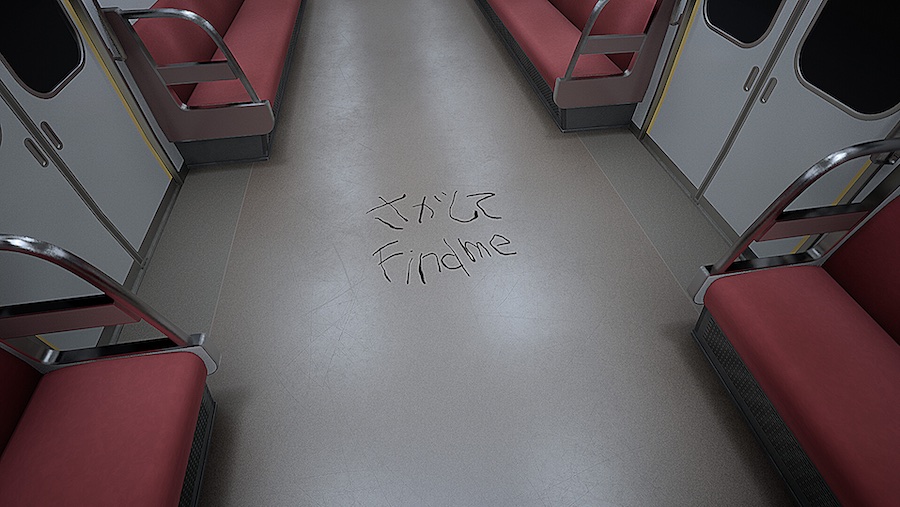
── The Exit 8 is set in a subway station corridor, while Platform 8 takes place inside a train. Do you like trains?
Kotake: It’s more that I have always liked confined spaces such as elevators, in addition to subways and underground passageways. In my initial concept for The Exit 8, the player was supposed to be able to go all the way onto the subway train, but due to development restrictions, I ended up repeating the same corridor. I ended up regretting that a bit, which is why I wanted to set the sequel on a train.
── The Exit 8 is an unnerving title, however, you can run away and try to escape. Platform 8, on the other hand, is set in a completely enclosed space with even more jump scares. Some players were critical of this change in tone. What do you think about this mixed reception to Platform 8?
Kotake: I expected that some people would prefer The Exit 8. I got reactions saying, “It was scarier than I expected” about Platform 8, but I intended it to be a mild horror game with some jump scares.
── It is scary.
Kotake: I think that’s partly because I’m used to the Resident Evil series.
── So, your point of reference is Resident Evil… (laughs)
Kotake: Yes, compared to stuff like the baby in Resident Evil Village, Platform 8 is not at all scary… (laughs)
── Nowadays with social media, I expect you often see negative comments about Platform 8. Do you feel uneasy when you come across such opinions?
Kotake: Everything that has ever been created has received negative feedback. So, I think it’s fine to make whatever you want. The good thing about being an independent game developer is that I can create what I like. I’ve seen some people say that they like The Exit 8 more than Platform 8, and when I read such opinions, it makes me feel glad that I made it (The Exit 8). Platform 8’s percentage of positive ratings on Steam is quite a bit lower… but that’s just how it goes with sequels.
── That’s a philosophical way of looking at it.
Kotake: I’m a fairly optimistic person, so I think that plays a big part.
The anomalies that were shelved for going off the rails

──Platform 8 has elements of a memory game and can be a bit ruthless with some of its anomalies. Were there any anomalies that you thought were too difficult and decided to leave out?
Kotake: There was an anomaly where the light goes out, and when it comes back on you are suddenly facing the opposite direction with the middle-aged guy chasing you. I thought it was too difficult, so I cut it. Also, this is about an anomaly that is still in the game, but originally there was no “Don’t get off” notification on the electronic signage at Kukudo Station. I added this warning in later, as without it I thought the anomaly was a little mean-spirited because players can’t progress in the game if they get off the train.
── The published version is more player-friendly than the prototype was.
Kotake: That’s right. I had explanations like “Don’t look” appear on the electronic signage in situations where it was difficult for players to work out what strategy they should take. However, I was surprised to learn that some people were able to clear the game without even seeing the explanations. For example, the streamer Gacchiman was able to guess his way through the game without looking at the signage at all, which I thought was amazing.
── In Gacchiman’s case it seems that he is an experienced player. According to the feedback, were there any anomalies players found harder or easier than you expected?
Kotake: What stands out to me is that I got occasional comments about the “894” anomaly being difficult. Some streamers struggled with it for about an hour. I did a survey on X, which indicated that it was a difficult anomaly. But I think that’s a good thing. Incidentally, this anomaly is a reference to a secret location in Pokémon Diamond and Pearl.
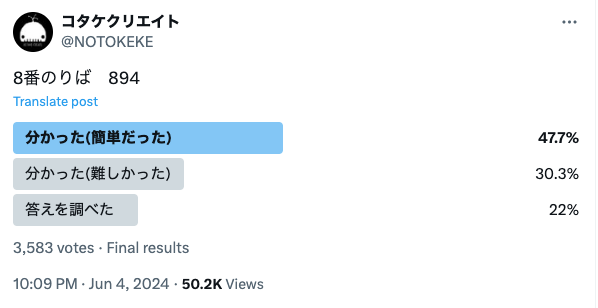
I worked it out (it was easy): 47.7%
I worked it out (it was hard): 30.3%
I looked up the answer: 22%
── It seems to be very difficult to make something that is “the right level of difficult.” How many playtesters did you have for the game?
Kotake: I asked my wife and friends to test play Platform 8, so it only had about 4 testers. As for The Exit 8, I had joined iGi (an incubation program for indie creators) for a short period of time, so I asked my fellow developers to play the prototype at a showcase event that was part of the program. I thought about asking them again this time, but I wanted to watch them test the game, which I thought might make them feel uncomfortable, so it turned out to be a small-scale play test.
── I see, you considered various factors and decided to keep the play test small. Did you incorporate any feedback from players of The Exit 8?
Kotake: Not really, as the gameplay is completely different in Platform 8. However, I did change one anomaly so that it involved the middle-aged guy, as I thought it would please his fans.
── Even from the Steam reviews, you can tell that there are a number of people who like the middle-aged guy NPC that appears in both The Exit 8 and Platform 8 (related article). However, in Platform 8, there is also a little girl. How was the girl created? Or rather, who is she?
Kotake: That girl is an asset that I found while looking for photogrammetric 3D models. At first, I considered making her with MetaHuman, but it’s a bit difficult to make children using that app. I try to use assets where I can, so I decided not to worry about it and search asset stores.
──The fact that you actively use assets gives the impression that you have both a practical and discerning approach when it comes to art. As a game developer, do you think your strengths lie in game design or art?
Kotake: I was an artist when I worked for a game company, so I guess I am more of an artist. The 8 series was borne from my desire to make games set in underground passageways and on trains, and Strange Shadow, which is in development, came from an impetus to make creepy, gigantic creatures. I consider these ideas as starting points for the rules of each game.
A preference for simple games with no tutorials
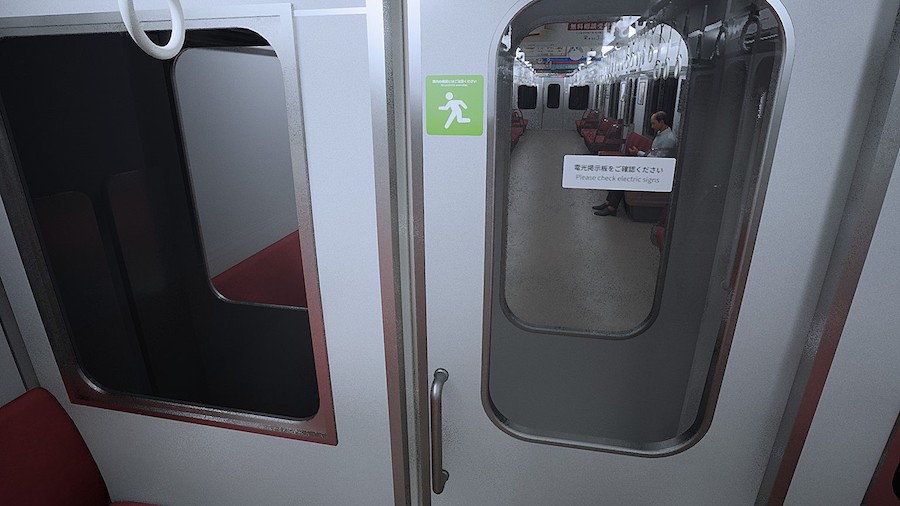
── I think the appeal of The Exit 8 and Platform 8 lies in their simplicity. How did you develop this sense for developing such games?
Kotake: I have been making games as an independent developer for 7 or 8 years now, so I think it’s something that I have built up along the way. The ideas for games come from my own feelings and experiences. But I do like games such as INSIDE, which have no tutorial, so I may have been conscious of that.
──It seems you have a strong preference for certain kinds of games. The Exit 8 was inspired by I’m on Observation Duty, but is there a game that had a strong influence on Platform 8?
Kotake: The game that had the biggest impact on Platform 8 is probably The Exit 8. There were few anomalies in The Exit 8 which led to a game over, so I wondered what would happen if I reversed that ratio in the sequel, resulting in Platform 8.
──It’s interesting how you were most inspired by your own work.
Kotake: Of course, I was also influenced by other titles. I think the fun of completing the different challenges on each floor of Splatoon 3: Side Order is reflected in Platform 8. Also, maybe Subway Midnight influenced the “each train car has a different world” aspect.
──The Exit 8, which was inspired by various titles, has in turn influenced numerous new games. It struck me as interesting that you condone the “Exit 8-like” genre. Why are you ok with others making copycat games?
Kotake: First of all, I don’t think it’s a bad thing to be influenced by something, as creativity is the output of what is inside you. Sometimes I receive DMs pointing out that a game is ripping off The Exit 8, but I don’t want people to get angry about this as The Exit 8 was also influenced by other games.
The reason why I condone the genre is because even if you tell people not to make games with the same formula, you can’t stop them. Ideas aren’t copyrighted. Besides, I’m happy that my idea pioneered a genre.
──Of all the “8-like” games that have been released so far, are there any that left a particular impression on you?
Kotake: I liked how in False Dream, taking a photo of the anomaly causes it to react. I was influenced by False Dream to introduce an anomaly in Platform 8 that moves when it is discovered.
In Victor’s Test Night, I thought it was interesting how the gameplay involved coming up with a strategy based on whether an anomaly was present or not. DEAD END was also good, although it’s not quite an “8-like.” Although the Steam page says it was inspired by The Exit 8, the rules are totally different. You only have to do “certain things” to clear the game, and once you understand what that is, you can complete it in just 10 minutes, but it was fresh and interesting.
On Kotake Create’s upcoming game Strange Shadow
── How is the development of your new game Strange Shadow going?
Kotake: I have decided on the overall direction, but the detailed level design is taking a while. It’s a bit tough as there’s a lot more work involved than on the “8 series.” I hope to reveal something at a game event next year (2025).
── You mainly work independently, but have you ever considered forming a team?
Kotake: I have considered it, but I haven’t really given it any serious thought. There are various reasons- I enjoy creating things on my own and I’m not very good at communicating with other people. I sometimes think about outsourcing the aspects that I can’t make myself, such as the music, but I have no plans to form a team.
── I’m surprised to hear you say that, as from this interview, you seem like an agreeable person and good communicator.
Kotake: I appreciate you saying that. But even when I worked at a game company, I found it a little hard to work with others. I guess teamwork doesn’t suit me.
── Finally, please tell us what you plan to work on in the future.
Kotake: I will work hard on developing Strange Shadow. Currently, preparations are going well, and I should be able to release it in 2025 at the earliest.
── Thank you very much for your time.
The Exit 8 is available on PC (Steam) and Nintendo Switch. Platform 8 is out on PC (Steam).
Interviewer/Writer/Editer: Aki Nogishi]
Interviewer/Coordination: Nobuaki Shibuya]
Interviewer/Editer: Ayuo Kawase
Interview Translation: Verity Townsend
Translation Editor: Amber V

